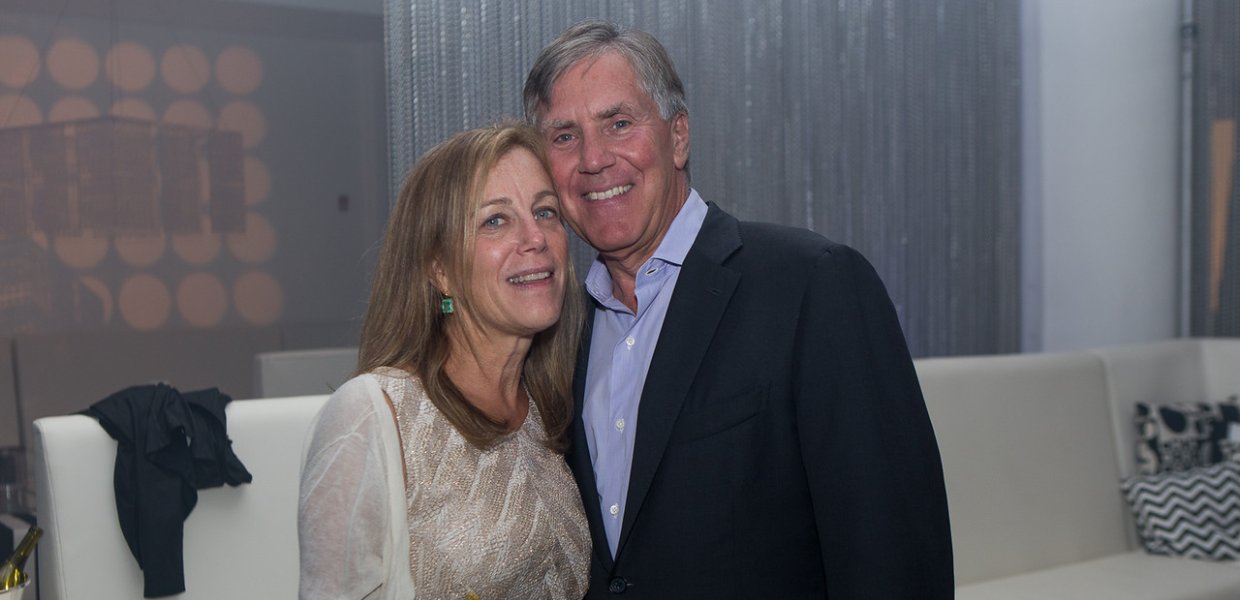Mark Greenberg and Tami Morachnick are no strangers to USC Annenberg. Their son Matthew graduated from the School of Communication last May — Greenberg was on stage to hand him his degree. Their daughter Kate enrolled in the School of Journalism this fall. Greenberg and Morachnick met when both worked at HBO in the 1980s. Today, Greenberg is president and CEO of EPIX, and serves on the USC Annenberg Board of Councilors. Morachnick is an intellectual property attorney who has had a successful career working with creators of cutting-edge TV and web-based programming. The Annenberg Agenda sat down with the New York-based couple recently during one of their regular visits to Los Angeles. This interview was edited for length and clarity.
Annenberg Agenda: Tami, you now work as a consultant for Google/YouTube. Earlier in your career, you spent 13 years with MTV, involved with prominent shows such as Punk’d, Jackass and The Hills. What was that experience like?
Tami Morachnick: I read every script. I saw every cut. I’d weigh in: “We can’t air this because of this legal issue.” “Can you pull this back?” “Can you back this up?” “Let’s review your substantiation to be able to do this.” Trademark issues, copyright issues, and every tort imaginable — we dealt with. Getting all necessary releases before shooting, location agreements, dealing with shooting in places they shouldn’t have been. I always said that every show I worked on was like the worst possible law school exam.
Mark Greenberg: Tami worked on some of the most disruptive shows on television. As a content-creation proposition, whether it was at MTV or the stuff that Tami works on today with YouTube or what I do at EPIX, is how do you make content that’s relevant to people? The metrics keep on changing, and evolving faster, so those are our challenges, whether it’s on a YouTube channel or a cable network. The pressures on all of us to deliver are enormous. One of the things that we love about USC Annenberg is that the school recognizes that media isn’t just a tradition-based proposition, that you have to understand the “who, what, when, where, why?” — but you also have to understand, “How do you apply that?” This is the challenge today for tomorrow’s environment. I think that’s why both Tami and I feel really strongly about USC Annenberg, now that we have a second child at USC Annenberg, and one just graduated. The school recognizes or embraces evolving technology and concepts and deals with them head-on. This is necessary — you have to adapt to a new environment, otherwise you won’t stay relevant. This makes USC Annenberg the premier school of communication and journalism in the country — because the school recognizes that change and is willing to deal with both Silicon Valley and traditional media all at the same time.
Annenberg Agenda: Mark, you support the work of Professor Stacy Smith and her Media, Diversity, & Social Change Initiative at USC Annenberg.
Greenberg: We saw Stacy present on the lack of diversity in the entertainment industry and, afterward, she and I discussed how to address the imbalance. Driving change takes time — we’ll have to work at it. How do we start to change the paradigm? Specifically, the lack of women writers and women directors in Hollywood is astounding. Approximately 50 percent of the audience for movies and TV programming is female, but women are under-represented in the production process. Ensuring a balance of perspectives and voices that reflect the audience will result in storytelling that is relevant to women as well as men, tapping experience, outlook and point of view that speak to the entire range of consumers. Improving diversity in the industry is not only the right thing to do, but it’s actually good business.
Annenberg Agenda: Tami, big picture, how has content creation changed since your career began?
Morachnick: Creators have to be able to create from the beginning to the end. When I started at MTV, you had multiple departments that were involved in the creative process. Today, these new creators create it all. They own it. They create it from beginning to end.
Annenberg Agenda: What are you doing with Google and their YouTube Space studios in Santa Monica and Manhattan?
Morachnick: I was involved with creating a curriculum for their content creators that are invited to use the space. I teach a required course on how to avoid legal issues when creating content. I present to a different class of creators every couple of weeks. I am always impressed by how smart and talented these people are and the wide range of channels represented. There can be people producing videos in their homes, some basic how-to’s on a wide range of topics, to numerous large corporate clients. The range of questions is incredible. It keeps me on my toes. It keeps me current and it keeps me relevant. I love what I’m doing.
Annenberg Agenda: The two of you recently donated to USC Annenberg five photographs taken in China by the legendary 20th century photojournalist Henri Cartier-Bresson.
Morachnick: We’re avid contemporary photography collectors. We are moving from a home into an apartment. So it was the right time to pare down. We have relationships with a number of museums and other places that these photos could’ve gone. But Mark and I have this special place for Ernie [Dean Ernest J. Wilson III]; the school teaches photojournalism and has held photojournalism exhibitions; and the school is so well connected to China. Donating these photos became an obvious choice. We couldn’t have chosen a better place for these to live.
Annenberg Agenda: Mark, you serve on the school’s Board of Councilors. Will you sum up your impressions of the “state of the school?”
Greenberg: I think the school is on a great path. I really believe that USC Annenberg is the best communication and journalism program in the country, without question.The new facility, Wallis Annenberg Hall, is the most incredible thing I’ve seen. And Sarah Banet-Weiser and Willow Bay, the two new directors of the schools have vision, and Ernie has vision. So the ability for USC Annenberg to continue to soar is there.









